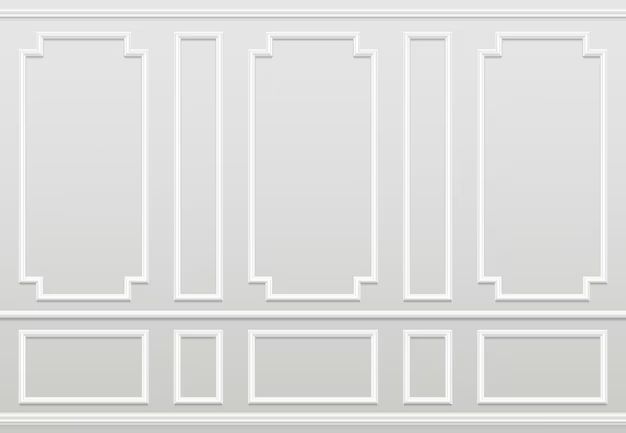Interior wall board, also known as drywall or plasterboard, is a common building material used to finish interior walls and ceilings. It consists of a paper-faced sheet of gypsum pressed between two thick sheets of paperboard. Drywall offers a smooth, durable surface for painting and decorating interior spaces. In this article, we will examine what interior wall board is, what it’s made of, the different types available, and how it is installed.
Page Contents
What is Drywall Made of?
Drywall consists of a gypsum core sandwiched between layers of heavy paper or fiberglass mats. Gypsum is a soft mineral that is mined and processed into a fine powder. When water is added to this powder, it hardens and dries into a solid panel.
The gypsum core makes up most of the thickness and weight of a drywall panel. The gypsum is mixed with other materials like vermiculite or perlite to reduce the weight. Foam or starch may also be added to increase fire resistance. The gypsum core provides the structural integrity of the drywall.
The paper or fiberglass facings on either side of the gypsum core serve several purposes. They protect the core from damage. They also provide a smooth surface for decorating. Standard drywall paper is made from recycled cardboard or paper. The paper facing is folded around the long edges of the panel to reinforce it. On some types of drywall, the paper is replaced with a fiberglass mat for increased strength and fire resistance.
Different Types of Drywall
There are several different types of drywall available for different applications:
- Regular drywall – 1/2″ thickness, paper-faced both sides. The most common and affordable option.
- Fire-resistant drywall – Uses glass fibers in the core for increased fire resistance. Required in some commercial buildings.
- Greenboard – Moisture resistant drywall for bathrooms, kitchens, and laundry rooms. The green coloring is added to the paper facing to identify it.
- Blueboard – Has a gypsum core embedded with blue fibers to increase mold/mildew resistance. Used in very damp areas.
- Soundproof drywall – Contains noise dampening materials to reduce sound transmission. Useful between living spaces.
- Type X – Special fire rated drywall for use in fire walls. Provides up to 2 hours of fire protection.
The thickness of drywall panels also varies. Most residential drywall is 1/2″ thick. Thicker 5/8″ panels provide increased strength and fire resistance. 1/4″ panels are also available for curved walls and specialty applications. The width of panels is either 4 feet or 4 ft x 8 ft or 4 ft x 12 ft for easier handling and installation.
How is Drywall Installed?
Installing drywall involves fastening panels to wall and ceiling frames. Wood or metal studs provide the supporting structure. Here is an overview of the drywall installation process:
- Plan panel layout – Minimize joints by optimizing seam placement.
- Cut panels to size – Use a utility knife, drywall saw, or power tools.
- Fasten to studs – Use drywall screws or nails every 12″-16″ along framing.
- Seal joints – Apply joint compound and finishing tapes between panels.
- Finish seams – Apply joint compound over taped seams for smooth finish.
- Prime and paint – Apply drywall primer then desired paint or texture.
Joint compound, also called mud, is a pasty material used to seal joints and fill screw/nail holes. Paper, fiberglass, or mesh tape reinforce joints before applying compound. It takes some skill to neatly finish drywall seams and corners. Most drywall installers use automated tools to spray on compound and standardize finishes.
Benefits of Drywall
Drywall offers a variety of benefits that make it a popular wall covering option:
- Affordable – Drywall panels are relatively inexpensive compared to other wall finishes.
- Durable – Resists damage from impacts and everyday wear-and-tear.
- Fire resistant – Gypsum core contains water that slows fire spread.
- Mold resistant – Gypsum core resists mold and mildew growth.
- Sound dampening – Multi-layer construction helps block noise.
- Easy to install – Panels mount directly to studs and are simple to finish.
- Smooth finish – Provides an ideal surface for decorating and painting.
Drywall can be finished in numerous ways to create different textures and decorative effects. It accepts paint readily. Repairs and alterations are also relatively simple with drywall compared to plaster walls. Overall, drywall provides an efficient, customizable wall system.
Conclusion
Drywall, also referred to as wallboard, plasterboard, or gypsum board, is the go-to material for finishing interior walls and ceilings in modern construction. It consists of a solid gypsum core sandwiched by paper facings. Drywall is valued for its fire resistance, strength, moisture resistance, sound damping, and cost effectiveness. It is available in a range of types and thicknesses for different applications. With basic tools and materials, drywall panels can be cut, mounted, and finished to create seamless wall and ceiling surfaces ready for priming and painting. Owing to these advantages, drywall has become ubiquitous in residential and commercial buildings across the world.

